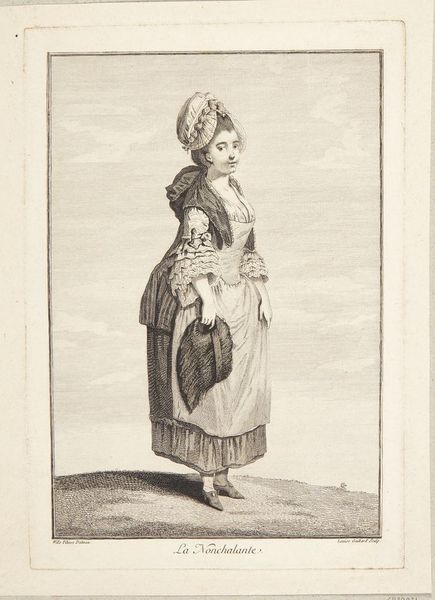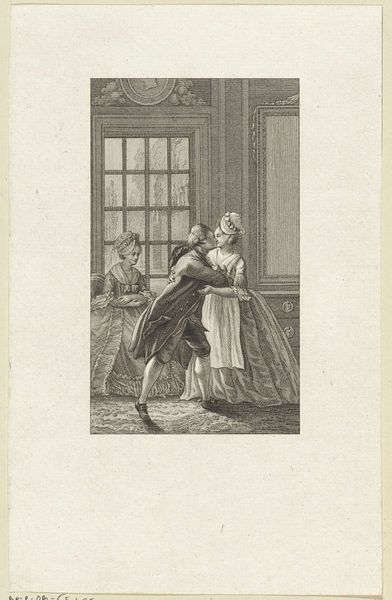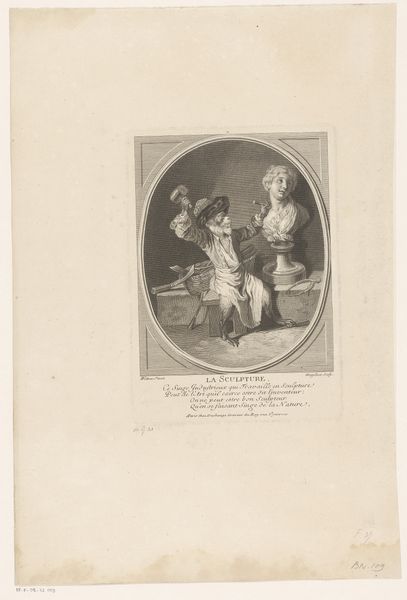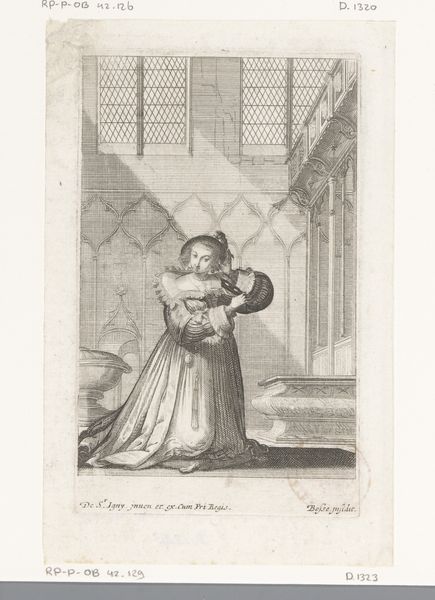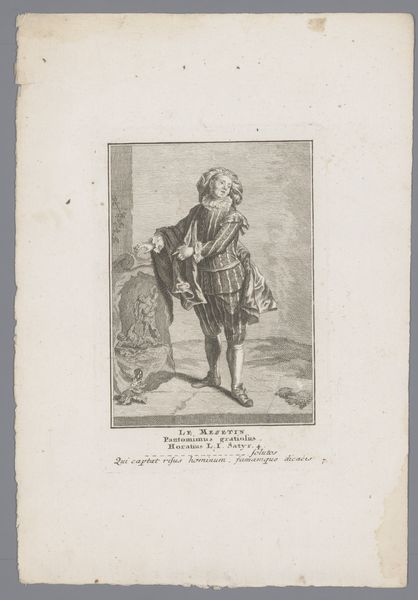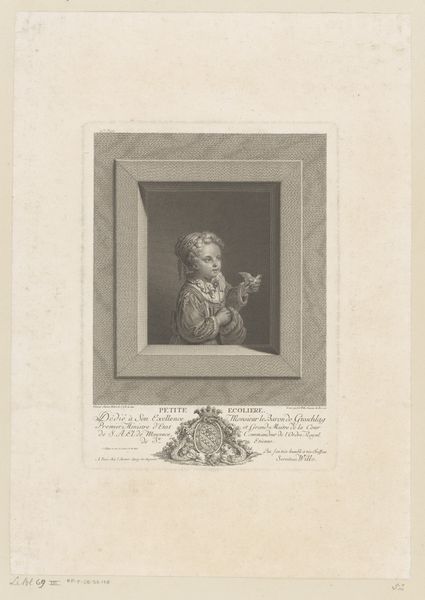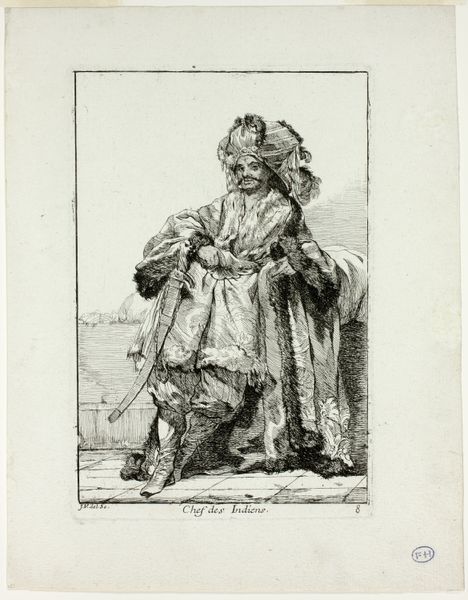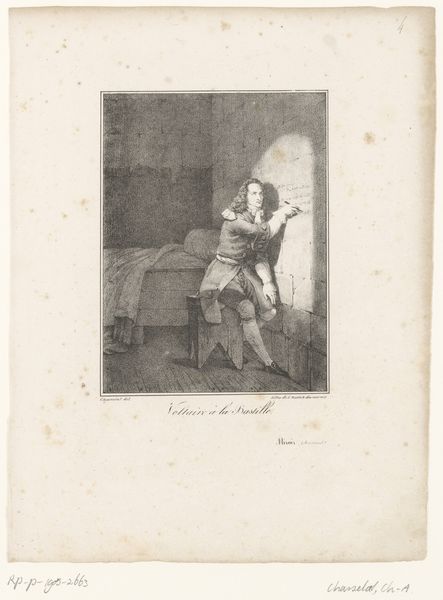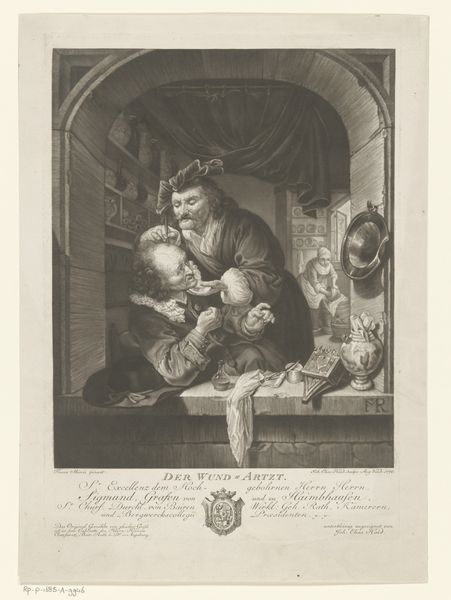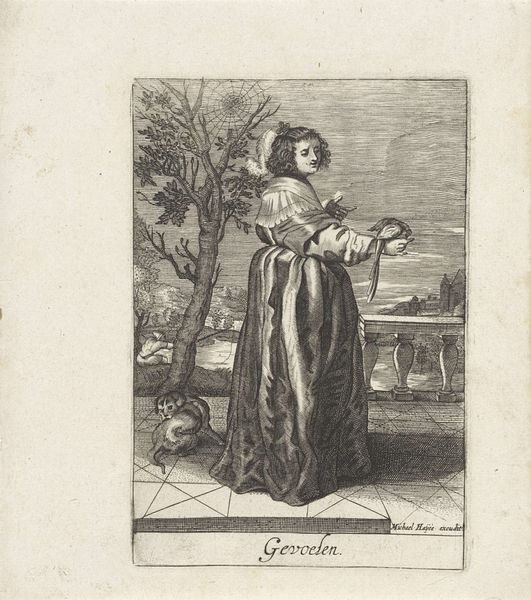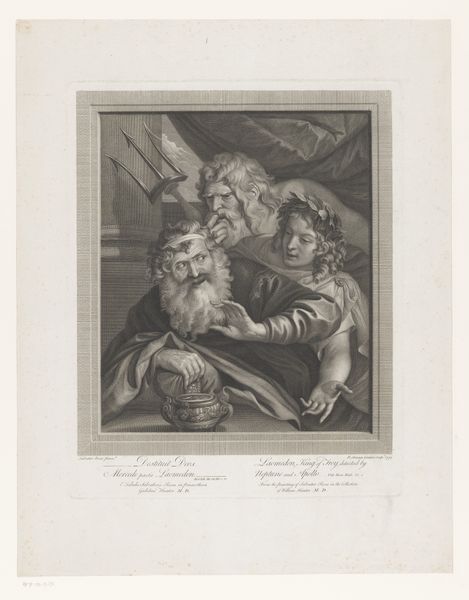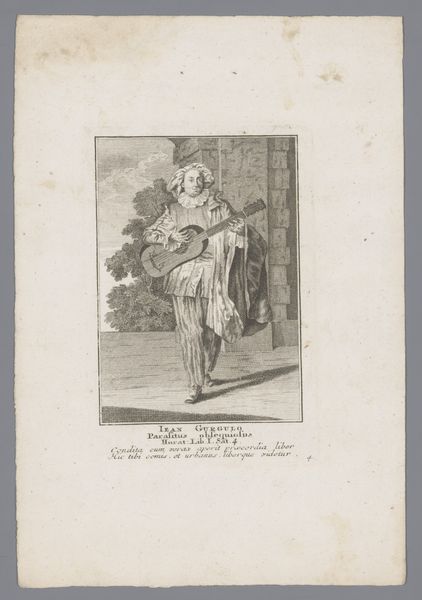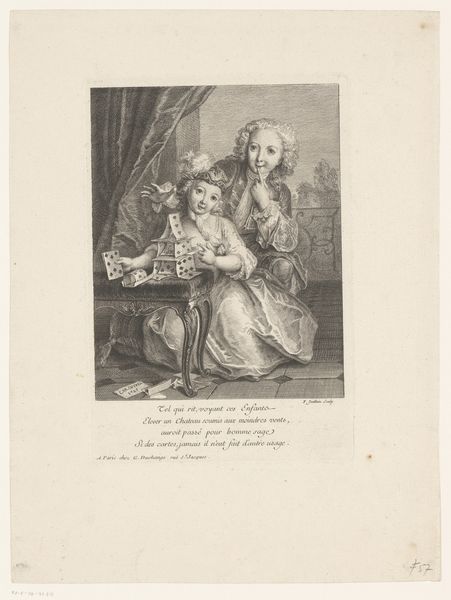
Dimensions: height 230 mm, width 159 mm
Copyright: Rijks Museum: Open Domain
Curator: This is an engraving from 1784, “Man with flowers in his hand looking at his reflection” by Robert Brichet, now held at the Rijksmuseum. It's quite striking, isn't it? Editor: It’s delicate, almost fragile. The etching gives it an ephemeral quality, as if the moment is fleeting. I'm interested in the way the lines define form here—there’s a lot of detail but not necessarily any texture. Curator: Indeed, it is striking how the artist depicts the subject, Narcissus, within the socio-political context of his time. This reflects a wider 18th-century preoccupation with identity and self-fashioning within elite circles. It portrays a moment of vanity, but one framed by the conventions of baroque portraiture. Editor: You mention portraiture. Is this purely an exercise in self-regard, or does it reflect something deeper? The flowers in hand, those refined garments—it speaks to constructed identity, and an investment of resources toward cultivating image. I mean, how were these engravings distributed? Who consumed them? Curator: These were more than likely circulated amongst the upper classes, showcasing both the sitter’s status and perhaps acting as models of fashionable masculinity. These images reinforced social hierarchies and idealised behaviors. This print also shows us how identity was, in some respects, performed in the 1700s. Editor: Right. Performance dictated by class. The method of producing prints meant dissemination was wider than an oil painting. Though perhaps the artist’s hand seems less obvious in the printmaking process compared to that of a painter’s, a lot of labor goes into achieving this level of fineness. Curator: Agreed, and considering the symbolic function of images, pieces like this engraving underscore the museum’s role in the democratization of art in modern times, making what was once a private visual language of social stratification accessible to the public. Editor: Absolutely. It offers a clear lens through which we might consider consumption and image production then and now. Curator: It's been revealing to consider this print's place in broader art history. Editor: I think that looking at it materially definitely adds new perspectives.
Comments
No comments
Be the first to comment and join the conversation on the ultimate creative platform.

